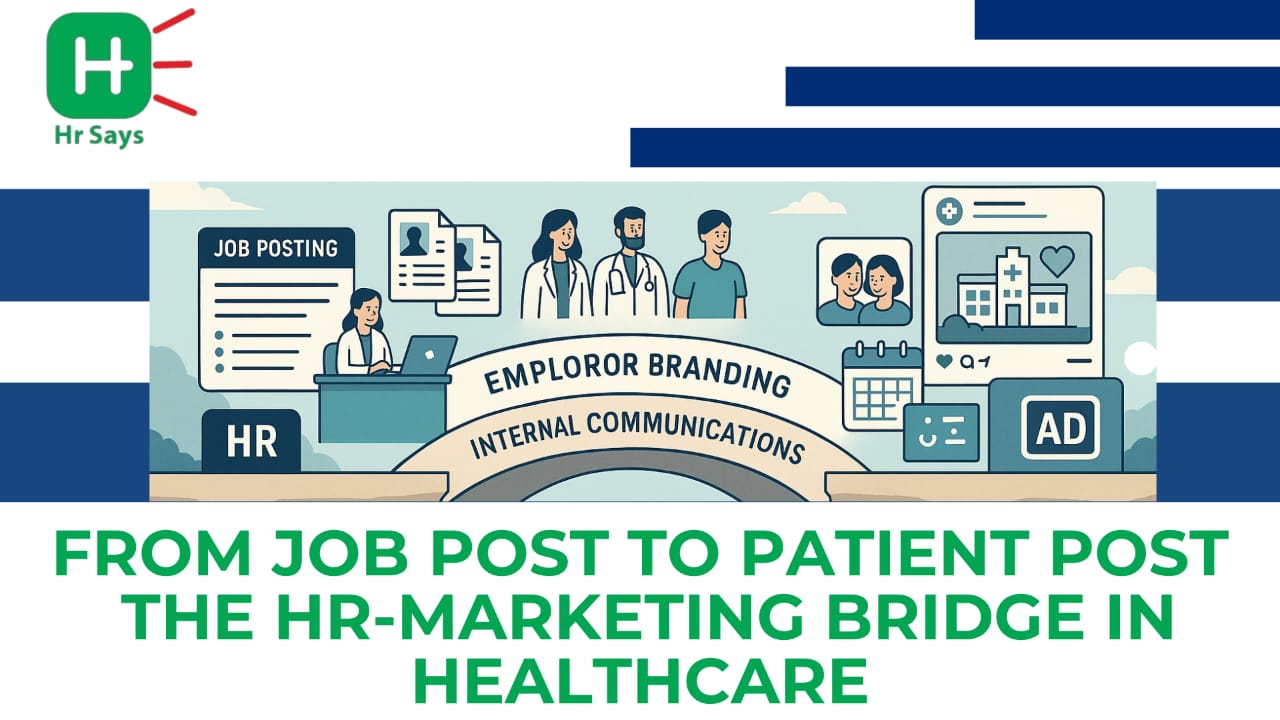What if hiring a doctor and attracting a patient were two sides of the same coin?
In modern healthcare, they are. And the bridge? Strategy, storytelling, and smart systems. This isn’t just marketing. It’s hospital branding, healthcare growth strategy, and reputation management—all rolled into one.
It Starts with the Inside
A hospital’s image begins behind its doors. Staff morale shows in patient reviews. Doctor behavior is discussed in waiting rooms—and online.
So when HR posts a job, marketing should already be listening. Because:
● A hospital is only as credible as its team.
● Patient engagement starts with employee engagement.
● Branding begins with the people who wear the scrubs.
This is where the HR-marketing handshake matters.
Patients Scroll Too
People don’t just choose doctors anymore. They Google symptoms, compare hospitals, read reviews, and scroll endlessly.
That’s where healthcare content marketing enters. Blog posts. Video explainers. Doctor interviews. All optimized with medical SEO.
But what if the best doctors don’t show up online? Or worse, they appear with poor ratings?
It’s not just a marketing problem. It’s a reputation management gap.
Doctor Branding is the New Front Door
Doctors are being searched before they’re seen. Their profiles must be:
● Accurate
● Visible
● Trustworthy
That’s doctor branding.
And it matters. Because patients follow trust, not ads.
Behind every click is a question: "Can I rely on this person?" That answer is shaped long before the consultation.
Systems Must Talk
A well-oiled healthcare CRM is no longer optional. It should track not just leads, but lives. From appointment to discharge. From inquiry to feedback.
But too often, systems don’t sync. Marketing brings the leads. Operations miss the follow-up. Patients vanish. So do insights.
To fix this, hospitals need:
● Unified data
● Shared KPIs between HR, marketing, and clinical teams
● Accountability across every department
From Growth to Loyalty
Patient acquisition is just step one. Retention is the real win. That’s where patient engagement plays its part.
Newsletters. SMS follow-ups. Feedback loops. All simple. All powerful.
And surprisingly, it’s the HR-marketing bridge that supports them. Because people stay loyal to care they trust—and teams they recognize.
Final Pulse
Hospitals don’t just need more patients. They need the right ones—and the right people to treat them. That’s why HR and marketing can no longer work in silos.
From job posts to patient posts, one truth remains:
Healthcare grows when people connect. Online and offline. Inside and out.
And that bridge? It’s not built with ads. It’s built with alignment.

 Healthcare isn’t just about healing anymore. It’s about reaching the right people—whether they’re patients or professionals. The thin line between HR and marketing is fading. And a quiet revolution is reshaping how hospitals grow.
Healthcare isn’t just about healing anymore. It’s about reaching the right people—whether they’re patients or professionals. The thin line between HR and marketing is fading. And a quiet revolution is reshaping how hospitals grow.












.jpeg)
.jpeg)

.jpeg)

.jpeg)


.jpeg)

.jpeg)

.jpeg)


